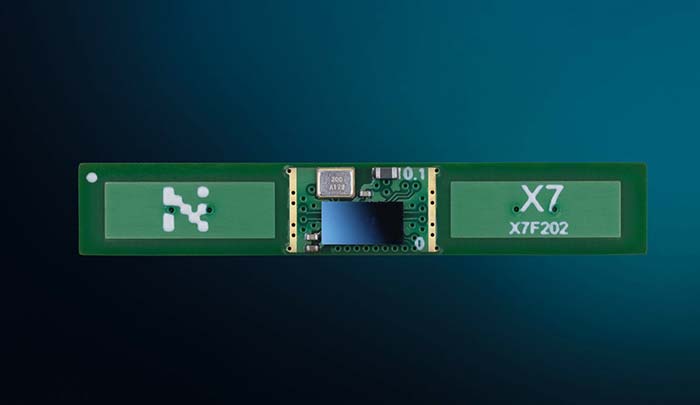 Today, NOVELDA, innovator of the world’s most reliable ultra-wideband (UWB) radar sensors, announced the new multi-target seat occupancy detection function of its NOVELDA X7 UWB In-Cabin Sensor. NOVELDA’s X7 radar chip is already capable of performing the world´s lowest power presence detection, child presence detection (CPD) and vital signs monitoring. X7 now adds seat occupancy detection capability through a software upgrade. A single UWB sensor can detect human presence in each seat within the car cabin, making it the most reliable and cost-effective seat occupancy radar solution on the market.
Today, NOVELDA, innovator of the world’s most reliable ultra-wideband (UWB) radar sensors, announced the new multi-target seat occupancy detection function of its NOVELDA X7 UWB In-Cabin Sensor. NOVELDA’s X7 radar chip is already capable of performing the world´s lowest power presence detection, child presence detection (CPD) and vital signs monitoring. X7 now adds seat occupancy detection capability through a software upgrade. A single UWB sensor can detect human presence in each seat within the car cabin, making it the most reliable and cost-effective seat occupancy radar solution on the market.
The comprehensive NOVELDA X7 UWB In-Cabin Sensor has the potential to fulfill multiple use cases with a single X7 system-on-chip (SoC), including ultra-low power presence and intrusion detection, child presence detection, seat occupancy detection, vital signs monitoring and gesture recognition. In addition to preventing pediatric heatstroke, NOVELDA’s solution may serve further lifesaving applications by detecting car crash survivors through its heartbeat detection functionality. X7, with a field of view (FoV) of nearly 180 degrees, allows companies to dramatically reduce the number of sensors in the vehicle, providing significant cost savings compared to other solutions, including 60GHz radar.
How UWB Outpaces 60GHz and Other UWB Ranging ICs for In-Cabin Sensing Radars
Unlike traditional weight sensors, NOVELDA’s seat occupancy solution differentiates between people and objects, preventing false seat belt alarms due to objects placed in seats. The solution achieves this by sensing a person’s tiny motions, including breathing and heartbeat, even if a person is motionless or there is a baby in the seat.
UWB frequencies also enable simpler mechanical integration than competing in-cabin sensing radars because UWB can sense through car seats and other materials through centimeter wavelengths. This capability reduces overall system cost and simplifies integration, making it the most reliable solution for seat occupancy, child presence detection, vital signs monitoring and more. NOVELDA’s unique UWB sensor technology (which does not utilize Channel Impulse Responses, unlike standard UWB ranging ICs) consumes less than 50 microwatts in a 1 frame-per-second configuration, outperforming any other existing radar integrated circuit (IC) on the market today, including UWB or 60GHz SoC.
“By optimizing our X7 radar chip with software enabling seat occupancy detection, we ensure our NOVELDA X7 UWB In-cabin Sensor can serve additional automotive applications through robust reliability and precision,” said Dag Wisland, CTO and founder of NOVELDA. “NOVELDA’s groundbreaking UWB sensing technology has proven its diverse utility by delivering lifesaving CPD capabilities in the automotive sector and vital signs monitoring in the digital healthcare sector, and now sets a new standard for seat occupancy detection and other in-cabin sensing capabilities.”
UWB: the next revolution in human presence sensing
With UWB’s diverse applications and technological capabilities, RationalStat values the global UWB market at $1 billion currently, projecting a compound annual growth rate of 18 percent from 2023-2030, exceeding Bluetooth and Wi-Fi. Major technology companies are driving widespread adoption of UWB, with global computer and smartphone manufacturers already integrating UWB, including Apple, Google and Samsung. NOVELDA’s industry-leading UWB sensing technology has been integrated by Lenovo, the world’s largest PC manufacturer, commanding a 24 percent market share in 2022.


